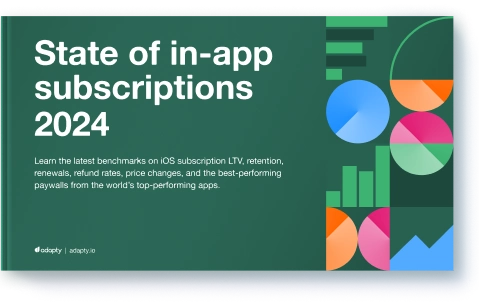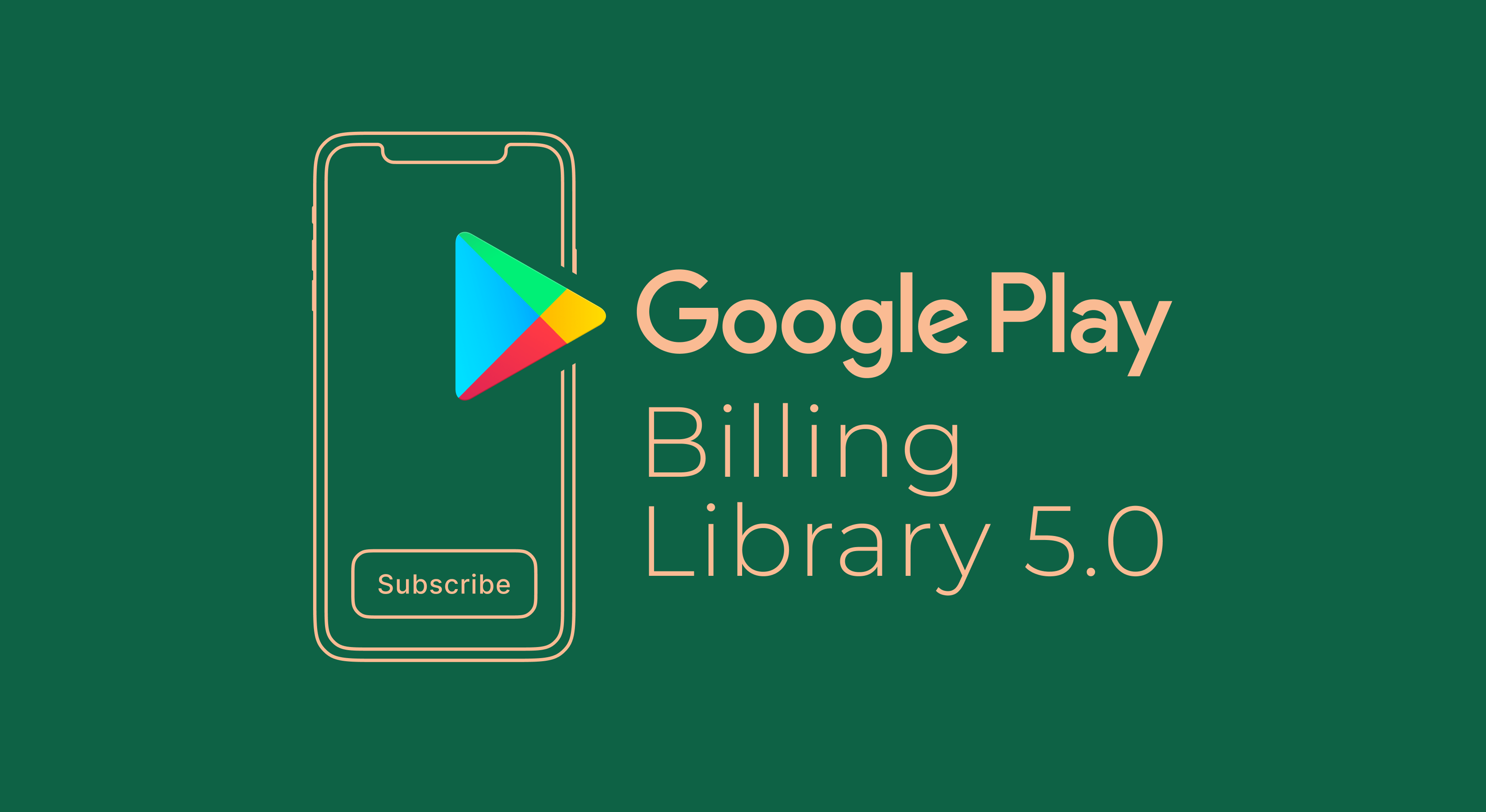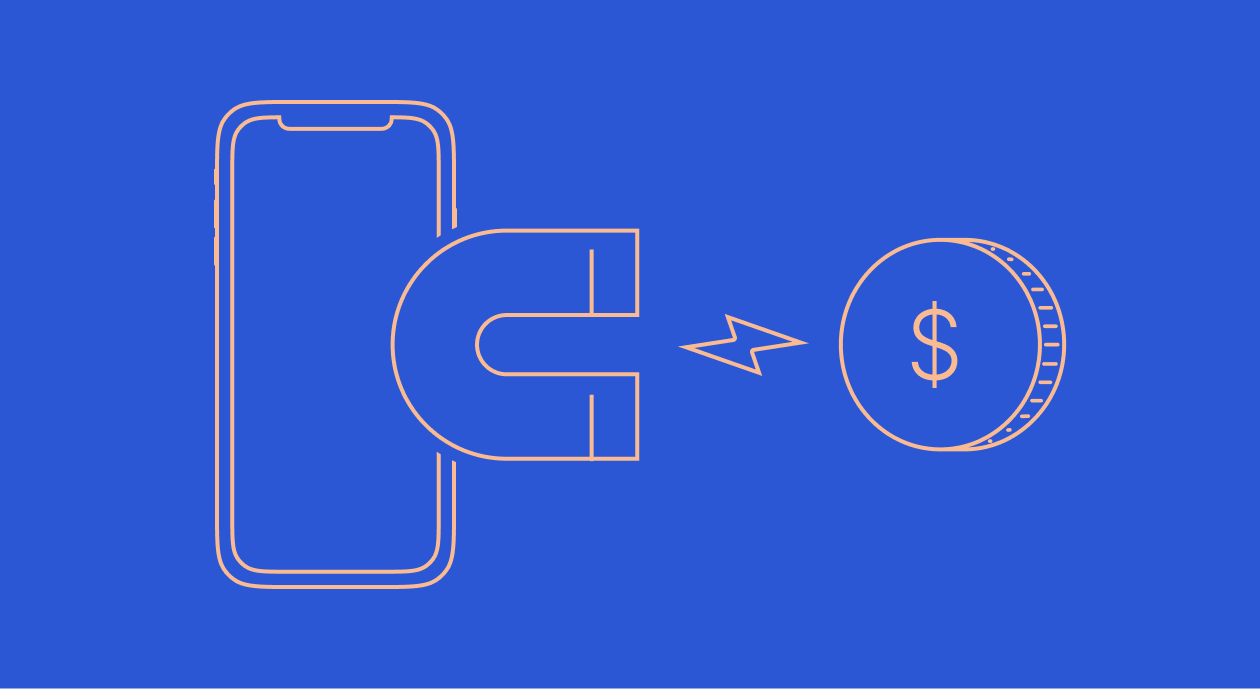App pricing: Guide to pricing tiers and strategies

Updated: September 6, 2024
20 min read

If your app is your business, your pricing model is your business model — plain and simple. By correctly understanding the needs of your customers and dividing them into segments with similar purchasing power, you can conquer the market in no time. You essentially create several products out of thin air — and all you need is just a good strategy.
We wrote this guide to help you do just that. We discuss the features and benefits of different pricing approaches, give you several examples and share our own experience and case studies. By the end of this guide, you should be fully versed in app pricing. Let’s go!
What is tiered pricing?
Tiered pricing is a strategy where you offer different levels of your product or service at varying prices. As an app developer, this means you can create several versions of your app, each with its own set of features and prices, to appeal to different types of users.
Here’s how it works: you start with a basic version of your app that includes essential features at a lower price. Then, you create higher-priced versions that offer more advanced features or greater usage limits. For example, a basic plan might be $10 a month for limited access, while a premium plan could be $50 a month with all features and unlimited access. This way, users can choose the plan that best fits their needs and budget, and you can attract a wider audience.
The main benefit of tiered pricing is that it helps you reach different segments of the market. Beginners might start with the basic plan, while power users opt for premium features. This approach not only increases your revenue by encouraging users to upgrade, but it also provides flexibility, allowing customers to find the right balance between cost and value.
Benefits of using tiered pricing models
Implementing tiered pricing models offers several key advantages for app developers.
First, tiered pricing can significantly increase revenue. By offering multiple price points, businesses can attract a broader range of customers, from budget-conscious buyers to those willing to pay more for premium features. This approach not only brings in more customers but also encourages existing customers to upgrade to higher-priced tiers as they see the value in the additional features or services offered.
Second, tiered pricing helps with customer segmentation. By creating different tiers, businesses can cater to the specific needs and preferences of various customer groups. For instance, a basic tier might appeal to casual users or small businesses, while a premium tier attracts power users or larger organizations. This segmentation allows businesses to better understand their customers and tailor their marketing and development efforts accordingly.
Lastly, tiered pricing enhances the perceived value of your product or service. When customers see a range of options, they can compare features and benefits more easily, which helps them appreciate the value of higher-priced tiers. This comparison often makes the premium options seem more attractive and worthwhile, leading to higher customer satisfaction and loyalty.
How to calculate tiered pricing for your app?
- Analyze Your Costs and Value Proposition. Start by understanding the costs involved in running your app, including both fixed costs like development and server maintenance, and variable costs such as customer support and transaction fees. Additionally, clearly define the value your app provides to users.
- Segment Your Market. Identify different user segments based on their needs and willingness to pay. Consider what features or services each segment values the most, such as essential features for basic users, additional features for standard users, and comprehensive features for premium users.
- Define Your Tiers. Create different pricing tiers that cater to these segments. For example, you might have a Basic Plan with only essential features, a Standard Plan with more features and moderate usage, and a Premium Plan with all features and high usage limits.
- Set Pricing Based on Value and Costs. Determine the pricing for each tier by considering the value provided to users and your costs. Make sure each tier is profitable by including both the fixed and variable costs, along with a desired profit margin.
- Test and Adjust. Launch your pricing tiers and monitor user feedback and sales data. Be ready to adjust your pricing and tiers based on how users respond and how well each tier performs in the market.
- Communicate Value. Ensure that users understand the value they get at each pricing tier. Use clear descriptions and comparisons to highlight the benefits of upgrading to higher tiers, making it easy for users to see why they should choose a more expensive option.
| With Adapty, you can write, design, and adapt paywalls with no hustle and extra code. A/B-test your paywalls to get the better converting ones. Try Adapty now! |
Types of tiered pricing models
As an app developer, you can use various tiered pricing models to appeal to different user segments. Each model offers unique features and pricing to match the needs of various customers. Here’s a simple overview of the common types of tiered pricing models:
Starter
The ‘Starter’ tier is usually designed for new or casual users who need basic features. This tier typically includes essential functionalities at no price, making it accessible to individuals or small businesses with limited budgets. The goal is to attract users with a no entry cost, encouraging them to try your app without a significant financial commitment. The Starter tier helps build your user base and provides an opportunity for upselling to higher tiers later.
Standard
The ‘Standard’ tier is aimed at regular users who need more features and higher usage limits. It strikes a balance between cost and value and is often the most popular choice. This tier usually includes additional features and better support, catering to small to medium-sized businesses or more serious individual users. The Standard tier is often seen as the best value for money, providing a comprehensive set of features without the premium price tag.
Premium
This tier targets users who need the full range of features and are willing to pay a higher price for them. This tier includes all the advanced functionalities, highest usage limits, and premium support options. Ideal for large businesses or power users, the Premium tier offers the best possible experience and the most value. Users at this level are looking for maximum performance and are less price-sensitive, focusing more on the benefits and exclusive features provided.
Example: How we use tiered pricing at Adapty
Adapty is a platform that allows app developers to supercharge their monetization strategy. We also employ tiered pricing to effectively meet the diverse needs of our clients:
- Free Plan costs $0 per month and is ideal for businesses with up to $10K in monthly revenue. It includes basic features to help you get started without any initial investment.
- Pro Plan charges 1% of your revenue with a minimum fee of $99 per month. It includes advanced features like A/B testing for paywalls, integrations, advanced analytics, and chat support, making it suitable for growing businesses.
- Pro+ Plan costs 1.2% of your revenue with a minimum fee of $499 per month. It includes all Pro Plan features plus ETL integrations, LTV and revenue prediction, and priority chat support, designed for larger businesses needing comprehensive support and analytics.
As you can see, while we have a minimum monthly fee, the payment actually depends on the size of your app. This is fair for both developers and the company — the bigger you are, the more features you need, and the higher our costs are.
Just look at our clients, who employed a similar approach to pricing and got great results:
For instance, Moonly scaled from $0 to $2.45M in annual recurring revenue (ARR) by utilizing Adapty’s infrastructure for in-app subscriptions and analytics. This allowed them to make data-driven decisions and continuously experiment with their paywalls, ultimately improving conversion rates and user retention.
Similarly, Union Apps used Adapty to grow the revenue of Prime Fasting from $205k to $2.5M ARR in just six months. By leveraging Adapty’s analytics and A/B testing capabilities, they optimized onboarding processes and paywall designs to significantly boost their app’s monetization.
Avatarify, another app that adopted Adapty, grew from $0 to over $200k in monthly recurring revenue (MRR). They benefited from Adapty’s accurate subscription data and fallback paywalls, which ensured they captured revenue even when users faced connectivity issues.
2024 subscription benchmarks and insights
Get your free copy of our latest subscription report to stay ahead in 2024.
Popular tiered pricing strategies
Here are some strategies you can use as an inspiration for your app.
Three-tier pricing
A three-tier pricing strategy offers products or services in three distinct levels: Basic, Standard, and Premium. This approach helps businesses cater to different customer needs and budgets, maximizing revenue and customer satisfaction.
| Basic Tier | Standard Tier | Premium Tier | |
| Structure | Provides essential features at the lowest price. | Includes additional features and benefits at a moderate price. | Offers the full range of features and highest level of service at the highest price. |
| Benefits | Attracts cost-conscious customers and lowers the barrier to entry. | Balances cost and value, often becoming the most popular choice. | Targets customers who need comprehensive solutions and are willing to pay more for the best experience. |
This approach is easier understood with some examples:
Spotify’s three-tier pricing strategy includes a free Basic tier that offers ad-supported listening with limited skips. The Standard tier, known as Premium, provides ad-free music, offline downloads, and enhanced sound quality. Their Premium Family tier caters to households, offering multiple accounts at a discounted rate, which encourages family members to switch from individual plans to a shared one.
Dropbox offers a Basic tier with free storage to attract new users. Their Standard tier, called Plus, provides additional storage and basic sharing features at a moderate price. The Premium tier, known as Professional, offers advanced sharing options, extensive storage, and priority support, targeting professionals and businesses that require more robust features.
Adobe’s three-tier pricing includes a Single App plan, allowing users access to just one Adobe application, ideal for those with specific needs. The Standard All Apps plan gives access to the entire suite of Adobe applications, catering to users who require multiple tools. For businesses, Adobe offers Premium plans with enhanced collaboration features, additional storage, and advanced support, ensuring comprehensive solutions for large teams and enterprises.
Multiple-tier pricing
A multiple-tier pricing strategy involves offering several pricing levels, each with different features and benefits. This approach gives customers more options, allowing them to choose a plan that best fits their needs and budget. By providing a wider range of choices, you can attract a broader audience and better meet diverse customer requirements.
The main advantage of multiple-tier pricing is its flexibility. It allows you to segment your market more precisely and cater to different user groups, from basic users to those needing advanced features. This strategy can lead to increased customer satisfaction because users can select the plan that offers the best value for them. It also encourages users to upgrade as their needs grow, providing a clear path for scaling usage and spending.
Of course, this comes with some challenges. Managing and maintaining several pricing tiers can be complex, requiring careful planning and constant monitoring to ensure each tier remains attractive and competitive. It may also lead to customer confusion if the differences between tiers are not clearly communicated.
Feature-based tiers
In feature-based tiering, each tier provides a different set of features, and customers choose their tier based on the functionalities they need. This method allows you to segment your market effectively, offering various levels of service to meet different user requirements.
Canva offers three tiers: Free, Pro, and Enterprise. The Free tier includes basic design tools and templates, while the Pro tier adds advanced features like brand kits, unlimited folders, and access to premium templates. The Enterprise tier includes everything in Pro plus additional team collaboration tools and dedicated support, catering to large organizations.
Slack‘s pricing tiers are Free, Standard, Plus, and Enterprise Grid. The Free tier offers limited message history and integrations. The Standard tier adds features like unlimited message history and group calls. The Plus tier includes advanced administration and support features, while the Enterprise Grid provides extensive security and compliance features for large enterprises.
Feature-based tiering allows you to cater to a wide range of customers, from those who need only basic functionalities to those requiring advanced features. This approach can increase customer satisfaction, as users can find a plan that fits their specific needs. It also provides clear upgrade paths, encouraging users to move to higher tiers, which in turn leads to increased revenue as customers opt for more expensive plans.
Usage-based tiers
With this strategy, customers are charged based on the level of usage or consumption of a product or service. This approach is particularly effective for businesses where usage can vary significantly among customers, ensuring that users only pay for what they actually use.
One of the primary benefits of usage-based tiering is its fairness and flexibility. Customers appreciate paying only for what they consume, which can attract a larger user base and increase customer satisfaction. This model leads to higher and transparent revenue potential, as customers who heavily use the service will pay more.
Usage-based tiering is ideal for services where consumption can be easily measured and tracked. Cloud computing platforms like Amazon Web Services (AWS) and Microsoft Azure use this model, charging customers based on their usage of computing resources, storage, and data transfer. Utility companies also employ this strategy, billing customers based on their actual consumption of electricity, water, or gas.
The usage-based approach offers a flexible and fair pricing model that aligns costs with actual usage. It benefits both businesses and customers by ensuring efficient use of resources and providing clear value for money. This strategy is particularly suitable for industries where consumption varies widely and can be accurately measured.
Challenges of using tiered pricing
Tiered pricing models can present several challenges. One common issue is customer confusion, as users might find it difficult to understand the differences between tiers and the value each one offers. This confusion can lead to frustration and potential loss of sales. To overcome this, you should provide clear, concise information and comparisons between tiers.
Another issue is maintaining the right balance between tiers. If the pricing or features of one tier are too similar to another, it can cannibalize sales, causing your customers to choose lower-priced options that offer nearly the same value. Ensure that each tier is distinct and offers a unique set of features that justify its price point.
Managing and updating multiple tiers can be complex and resource-intensive. Frequently review and adjust the tiers based on customer feedback to keep the model effective. Using customer data and analytics can help businesses make informed decisions about when and how to update their pricing tiers to stay competitive and meet evolving customer needs.
Tiered pricing vs other pricing models
Tiered pricing model allows businesses to attract a wide range of customers and encourage upgrades by providing various features at different price points. While effective, tiered pricing can be complex to manage and may confuse customers if the differences between tiers are not clearly communicated.
Flat-rate pricing charges a single price for a product or service, regardless of usage. Its simplicity makes it appealing and easy for customers to understand, often leading to straightforward decision-making. However, it may not capture the full revenue potential from heavy users, who could be willing to pay more for additional usage, and might not provide enough value differentiation for lighter users, potentially leaving some feeling overcharged.
Freemium pricing offers a basic version of a product or service for free, with paid tiers providing advanced features. This model can attract a large user base quickly, as it allows potential customers to try the product before committing financially. The challenge lies in converting free users to paying customers, as many might be satisfied with the free version.
Per-user pricing charges based on the number of users and makes it scalable with the growth of the customer’s business. This model is straightforward and aligns costs with the number of users, which can be attractive to larger organizations. However, it might deter smaller teams or businesses due to higher costs per user, especially if they do not see the immediate value or if their usage does not justify the expense.
Tips to create an effective tiered pricing plan
Begin by conducting comprehensive market research to understand your industry landscape and competitor pricing strategies. Identify the pricing models of successful competitors and analyze what features they offer at each price point. This will help you determine a baseline for your tiers. Use surveys, focus groups, and customer interviews to gather insights into what features your target market values most and what they are willing to pay for these features.
Customer feedback is crucial in shaping a tiered pricing plan that meets the needs of your user base. Collect feedback continuously through various channels, such as direct surveys, customer support interactions, and social media. Pay close attention to common pain points and feature requests. Use this feedback to adjust your tiers, ensuring that each level offers valuable features that resonate with your customers.
Ensure that each pricing tier is clearly defined and offers distinct value propositions. The differences between tiers should be easy to understand and compelling enough to justify the price differences. Use clear and straightforward language to describe the benefits of each tier. Visual aids like comparison tables can be highly effective in highlighting the differences and helping customers make informed decisions.
Once you have implemented the pricing strategy, optimize it continuously. Regularly analyze sales data, customer behavior, and market trends to identify areas for improvement. Conduct A/B testing with different pricing levels and feature combinations to determine what works best. Be prepared to iterate and refine your tiers based on this data. Monitoring key performance indicators (KPIs) such as conversion rates, churn rates, and customer lifetime value can provide valuable insights into the effectiveness of your pricing strategy.
Recommended posts







